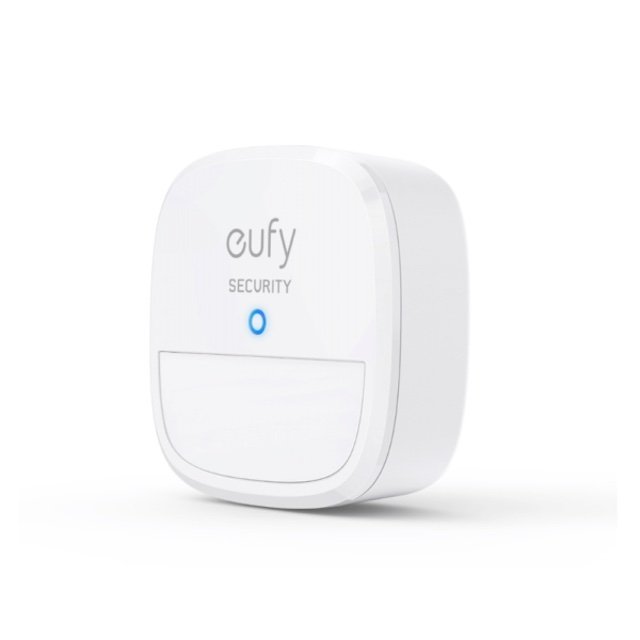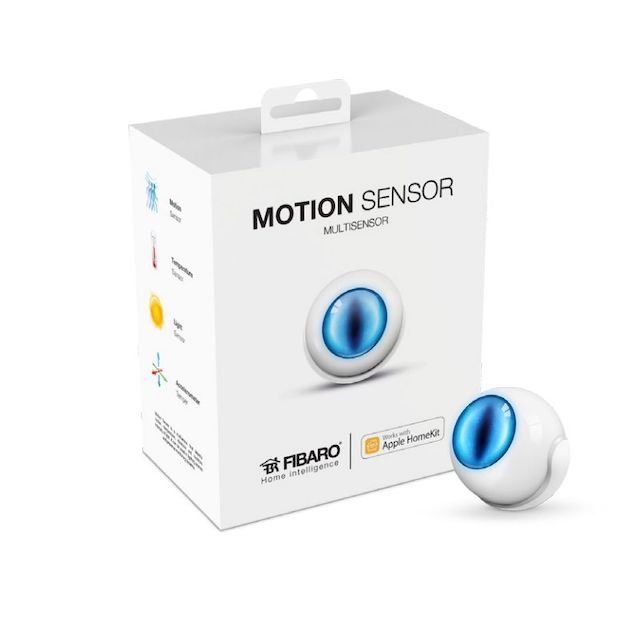Finding the best HomeKit motion sensor grants some new abilities to Apple's Home app, and with Thread technology, this will "Matter" even more going forward.
Motion sensors can be used for more than just security cameras, and have possibilities beyond simply letting you know if something is moving around in your home or if a door or window has been opened or closed. As with other smart home accessories, events registered with a motion sensor can also be chained to other actions: for example, triggering a garage door opener can also tell the smart thermostat to adjust to your preferred temperature.
There are several types of motion sensors available to purchase for home use, and while they are primarily used as part of a home security system, they can be used other purposes. The most common is as a component of, or connected to, a security camera for either indoor or outdoor use.
There are also window and door sensors that aren't associated with cameras, but can signal when doors and windows have been opened.
Many of the well-known brands associated with security and smart-home devices have incorporated HomeKit aka "Apple Home" support for at least some of their products, but Apple's standard is far less common to see on product packaging in stores compared to badges proclaiming support for Google Home or Amazon's Alexa. The current Thread protocol and Matter standard holds the promise of allowing many more devices — and not just ones bought in the future — to work with the Home app, giving Apple users a single app to control and manage smart home products and how they interact with each other.
Smart-home early adopters will know that most current protocols for devices require either a dedicated "hub" or for one of the devices to be "smart" enough to take on that duty, in order to coordinate communication between devices, and that is often still the case for smaller, wireless devices like motion sensors. For HomeKit, that has been either the HomePod or the Apple TV 4K.
A protocol known as Thread has been showing up in more shipping products, and its purpose is to allow devices to communicate with each other without a hub. Plugged-in devices that support Thread will have this ability automatically; battery-dependent devices will talk to other devices when needed, but other devices can't talk to them — owing to the need to conserve power.
Importantly, many hubs will be updated to include what is called a Thread Border Router, which acts as a translator between devices that support Thread regardless of manufacturer. Apple's HomePod line and Apple TV 4K (second generation) have already been updated to include Thread Border Router technology. The 2022 Apple TV 4K model that includes Ethernet also has Matter and Thread support, and thus can act as a Thread Border Router, however the lower-priced new model does not have this — making the $149 model the best choice for smart home users.
Matter, a new overarching standard slowly being rolled out by device makers, gives compatible devices a common "language" to communicate with regardless of manufacturer — as well as creating a private local network so that devices do not have to connect to the internet, vastly increasing security in smart-home devices. Many but not all existing devices are expected to be firmware-updateable to support the Matter standard over time.
As long as a device lists HomeKit or Apple Home compatibility, Matter isn't going to affect users. Keep that in mind when choosing the best HomeKit motion sensor.
Philips Hue
Philips was one of the first companies to bring HomeKit-compatible smart-home devices to market, and they continue to be one of the main brands smart-home accessory buyers will find in stores. While the Hue line is largely associated with lighting, it also includes a motion sensor in its lineup that has a reputation for being very fast in executing actions once triggered. The Hue Motion Sensor ($44.99 at Best Buy) is designed to work with other Hue products, but can be set to turn lights — individual or a group — on or off when someone enters or leaves a room, detect sunlight levels for efficiency in lighting use, and offers a nighttime mode to provide low lighting levels as people move around in an otherwise-dark home — all without having to invoke Siri or use an app to make this happen.
The Hue Motion Sensor does require a Hue Bridge (on sale at Amazon) for programming setups through the Philips app, or users can use Apple's Home app. The motion sensor comes with two AAA batteries that should be good for around two years, as well as a magnetic mount if required.
Eve Motion
Like the Hue motion sensor, Eve's version of the same product runs on two AAA batteries and can be placed just about anywhere — but the Eve Motion ups the ante by being an indoor/outdoor unit that uses Bluetooth LE and Thread to communicate with other HomeKit devices. It can detect motion up to 30 feet away, has a 120-degree feld of view, and includes a small sensor light that activates when it senses motion.
It has also been updated with Matter support.
The Eve Motion sensor sells for $49.95 on the Eve website.
Aqara Motion Sensor P1
The Aqara Motion Sensor P1 works with its own hub as well as any Zigbee 3.0 hubs, and takes the crown in terms of battery life at five years of estimated uptime. It is a small sensor that is mounted on a swivel base, allowing for many positioning and mounting options.
The downside of this one is it has a somewhat-small field of view — it can do 170 degrees, but only for up to 13 feet or a 150-degree view at 23 feet.
Like the previous options, it is battery-powered. Once set up with the Aqara hub, it can be controlled in the Home app, including reducing the duration of alarms and optionally disabling the blue trigger light. It is priced at $21.99.
Onvis Smart HomeKit Motion Sensor
The Onvis Smart HomeKit Motion Sensor is a solid, simple motion sensor that throws in temperature and humidity sensing, has Siri voice control, and does not require a hub if you already have a HomeKit hub such as a HomePod or Apple TV 4K. As the unit uses Bluetooth to communicate with local devices, it should be placed no more than 25 feet away from the hub for best performance.
The temp/humidity sensor can allow users to control things like the air conditioner or dehumidifier when it reaches a set limit. The batteries in it are rated for 15,000 hours of use, or around two years of regular use. The unit sells for $27.99 on Amazon, but a 15% on-page coupon is available at press time knocking the price down to just over $24.
Ecobee Smart Sensors
Ecobee offers two different options for motion sensors: a two-pack of standalone SmartSensors ($95.99 at Best Buy), and a two-pack of SmartSensors for Door and Windows ($75.99 at Best Buy).
The sensors are very small, and designed to work in concert with the Ecobee thermostat as the hub for temperature detection. The motion detection requires a subscription to Ecobee's Haven Home Security service, but is rated for a 120-degree field at up to 16 feet.
Eufy Security Motion Sensor
Eufy also offers a Security Motion Sensor for $24.99 when ordered direct that requires a Eufy HomeBase hub to work, but does also support HomeKit. It uses a lithium-ion battery for a two-year life in typical use, and offers a 100-degree detection field of up to 30 feet. Importantly, the sensor features a sensitivity dial that can be tuned to detect adults but ignore smaller beings like children or pets if desired.
Fibaro USA FGBHMS-001 Motion Sensor
Our last entry is one of the more unusual — the Fibaro USA Motion Sensor (retail price: $50, on sale at Amazon) offers motion, light intensity, and temperature sensing, and even includes a built-in accelerometer to prevent tampering. Be sure to purchase the model with the "Works with Apple HomeKit" badge on the package — note the "H" in the model number, since an identical model is sold with a similar model number, but that one is not HomeKit compatible.
The unit runs on battery, and typical runtime is said to be two years. The design may or may not be an off-putting factor: the unit, in operation, looks like an illuminated eyeball (blue for motion, pink for temperature, yellow for light intensity). The Fibaro currently relies on Bluetooth for communication, so it will need to be within 30 feet or less of a HomeKit hub in order to be controlled remotely.
New products are being introduced all the time or updated with Matter support — thus HomeKit compatibility. Keep an eye out for new and updated products to ensure you're always getting the best HomeKit motion sensor.
 Charles Martin
Charles Martin









 William Gallagher
William Gallagher


 Andrew Orr
Andrew Orr
 Christine McKee
Christine McKee

 Thomas Sibilly
Thomas Sibilly
 Andrew O'Hara
Andrew O'Hara







